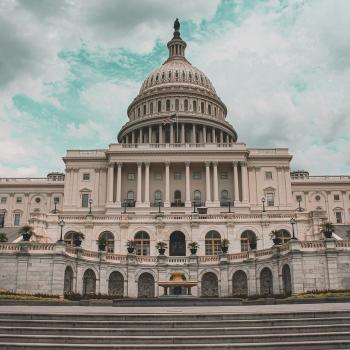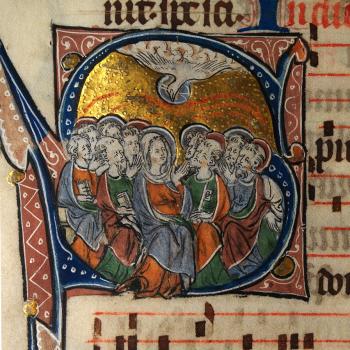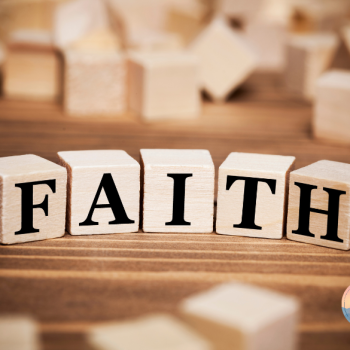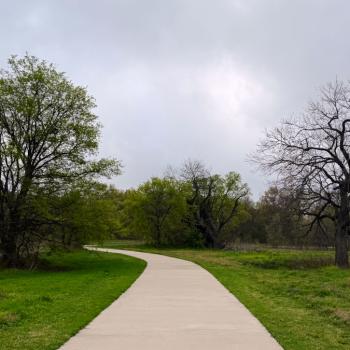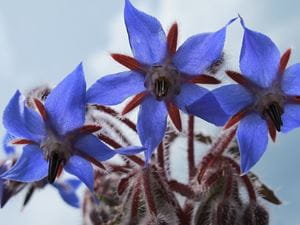
I knew the plant long before I knew its history. Walking along the streets of Wheaton, Illinois over a decade ago with my mother, she pointed out a weed that disrupted the low, uniform lines of mowed lawn. “Che qian cao (车前草)!” she announced, and promptly squatted down in someone else’s suburban yard to harvest some for tea.
My mother knew the plant from her childhood in the countryside of China’s Hunan province, where she and her six siblings roamed and often nourished themselves on wild, growing things. Che qian cao has been used for millennia in China to treat infections, sores, and insect bites, and also simply as an edible vegetable. Years later, I discovered the plant is also well known in North American herbology – commonly called “Plantain.”
When my family immigrated to the United States when I was just three years old, my mother carried her trove of botanical knowledge with her. She continued to gather wild things and plant gardens, setting down roots in this new-to-her land. As for me, a human seedling uprooted not long after germination and flown across the Pacific Ocean, the rooting process has been more complicated.
We moved frequently in our first years in the United States. When we finally settled in one spot for a while, a small town in Southeast Texas, I became a born-again Christian and joined a Southern Baptist youth group. The Biblical narratives of exile—Adam and Eve from the garden, the Israelites from the promised land, and Christians (for whom “the world is not my home, I’m just passing through”)—resonated with me, as one living in between the worlds of my family’s homeland and our adopted country; longing for place to belong.
As a college student, I imagined my future as a development worker in other countries, traversing the land as one on a mission; not staying long enough to learn the names of all the plants. But twelve years after graduation, I’m still here on the ancestral lands of the Potawatomi people (northeastern Illinois). Six years ago, my husband and I bought a house on a small parcel of land in the city of West Chicago, formerly known by settlers as “Junction”—and later renamed “Turner,” after the president of the Chicago and Union Railroad. The previous owners had not kept the land up, according to middle-class suburban standards, and the place had gone to seed, quite literally.
In early May, when the ground was waking from winter slumber, we moved in. Within weeks, vegetation exploded. In the bare patches between scraggly bits of lawn, I recognized an old acquaintance—plantain. At first, her low-lying, spreading leaves didn’t bother me. However, when she sprouted seeding stems reaching for the sky, I got down on my knees and began a vigorous weeding effort. Even then, a few years ago, my imagination was so constrained by the mentality of a colonizer: shape the land according to your design, square and flat and orderly. Pluck out what isn’t relevant to you.
I wanted my nice suburban lawn.
---
Yet, the land has a way of working on us, as Potawatomi botanist, Robin Wall Kimmerer, writes in Braiding Sweetgrass. Remembering the words of elder Henry Lickers, Kimmerer points out that we think we are working on itbut, all the while, the land is really exerting its power on us—quiet, subtle, and enduring.
In the years since we’ve been working this quarter-acre—mowing, weeding, building a sandbox for our boys, planting gardens, chasing squirrels, tapping our generous front-yard Maple for spring sap to make syrup—something has been happening in my body and soul.
I am becoming Indigenous to the land.
“For all of us, becoming Indigenous to a place means living as if your children’s future mattered, to take care of the land as if our lives, both material and spiritual, depended on it,” writes Kimmerer.
But I am an immigrant, a settler on lands belonging to others. My roots here are still so shallow. I barely know the stories of “Turtle Island,” the name Native peoples have given this beautiful North American continent. Indigenous peoples know their traditional homelands as “the world’s oldest library,” writes Australian Aboriginal author, Alexis Wright. They “have felt the exceptional powers rising from place, relationships with traditional lands.”
But what about me and billions of others disconnected from our ancestral lands, some who can’t go back, some who may not even know where these lands are?
The truth is that all of us are immigrants, even those whose roots go deep into the land upon which they were born. The Native creation stories tell of Skywoman, who fell from the sky—grabbing a handful of seeds from the Tree of Life in her fists, and then rescued from drowning by the animals—hosted by the generous Turtle on his back. She planted her seeds and danced until the land grew and sprouted and blossomed, and Turtle Island came to be. Much later, the Original Man, Nanabozho, was created and set down on Turtle Island. He learned his way from his elders, the plants and animals. We humans are the latest arrivals in a land long peopled by other living things.
Native origin stories parallel the Biblical creation story in some ways. In the Bible, humans were also created last and tasked with naming the creatures. But somewhere in the telling, the idea of naming and “dominion” (Genesis 1:26) have evolved from their more holy meaning of inviting relationships, service, and protection, to mean domination—with all that term implies today: as if this beautiful wilderness needed to be “tamed” to fit the sometimes warped and stunted vision of colonial control that so many of us wish to subject upon it.
And so, we settlers so often set ourselves apart, outside the circle of creation. As I witness coral reefs bleaching, forests burning out of control, and previously verdant valleys turned to desert by human activity, “species isolation”—“a sense of deep, unnamed sadness stemming from estrangement from the rest of Creation,” writes Kimmerer—burns a hole in my heart. What have we done to this precious place? What have I done? What poison have I absorbed and leaked into the land around me?
---
I envy the native peoples who are still tied into their traditional lifeways, stories, languages, and the deep, intimate knowledge of plants and land. I, for one, feel cut off. I struggle to excavate the ways of my Chinese ancestors—apart from an imperial mindset, to reclaim my birthright connection to the land. But I live a continent away from China and I speak a different language. I struggle to uncover resources within the religious tradition I’ve been adopted into where, so often, the land has been dishonored as too material and temporary, not spiritual or worthy enough for our attention. Yet Kimmerer, one of those who is translating Indigenous teachings for all of us, passing on the wisdom of plants, offers me some hope.
Kimmerer tells the immigrant story of plantain, also known to Indigenous people as “White Man’s Footstep.” Native people noticed that this new plant grew up—along paths, wagon roads, and railroads—wherever settlers came through. The Chinese name for the plant, which literally means “in front of the cart,” also speaks to plantain’s thriving in human-trodden places (interestingly enough).
Native people were distrustful, at first, of a plant that followed the “White Man”; but, when they realized it was here to stay, they began to know its ways. Unlike kudzu—another non-native plant that has become invasive, taking over large swaths of land in the American South and choking out other flora—plantain’s strategy is “to be useful, to fit into small places, to coexist with others around the dooryard, to heal wounds,” writes Kimmerer. Plantain, Kimmerer continues, has become “naturalized”—integrated into the landscape in a beneficial, interdependent way; a powerful and important metaphor.
Back in 2006, I renounced my Chinese citizenship and became naturalized as a U.S. citizen; but that was only a shuffling of papers. Today, I am becoming naturalized in a longer, deeper, dirt-under-the-fingernails kind of way. I am learning to claim this land as my home, this place which sustains me. The land has been peopled by so many before me—the maples, the Potawatomi, the Europeans, the plantain, the squirrels, and more. I am learning to be like the plantain—to fit into the ecology, to heal and not hurt.
For me, to be naturalized—or to be as Indigenous as I possibly can—is also to claim my roots. My grandfather named me Liu An (柳岸)—"Willow tree by the river bank.” A friend recently told me my name reminds him of Psalm 1:3, where the righteous “are like trees planted along the riverbank, bearing fruit each season.” In my own story of immigration, transplantation, and searching for belonging, I’ve been nourished from many different places. Yet, I believe their source is the same—the Creator, the One who gives life, the deep, deep River flowing beneath all the earth. So, I will put down roots here and be a citizen of Creation. I will call this place Home.
Liuan Huska is a freelance writer and speaker focusing on topics of embodiment and spirituality. Her writing, on everything from chronic pain to evangelical fertility trends, appears in Christianity Today, The Christian Century, In Touch Magazine, Hyphen, Sojourners, and Church Health Reader. She lives with her husband and their three little boys in the Chicago area.
4/19/2021 8:42:02 PM
